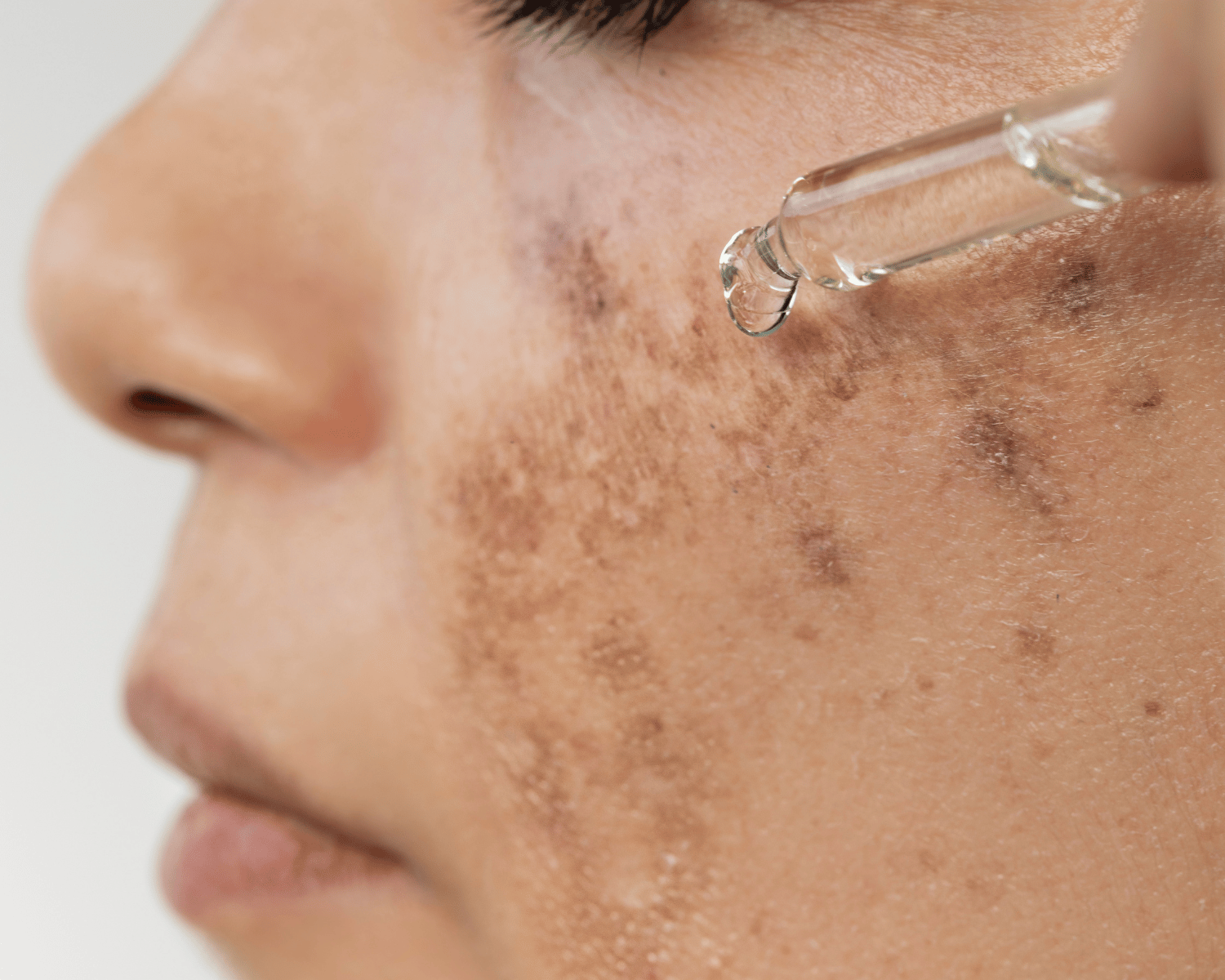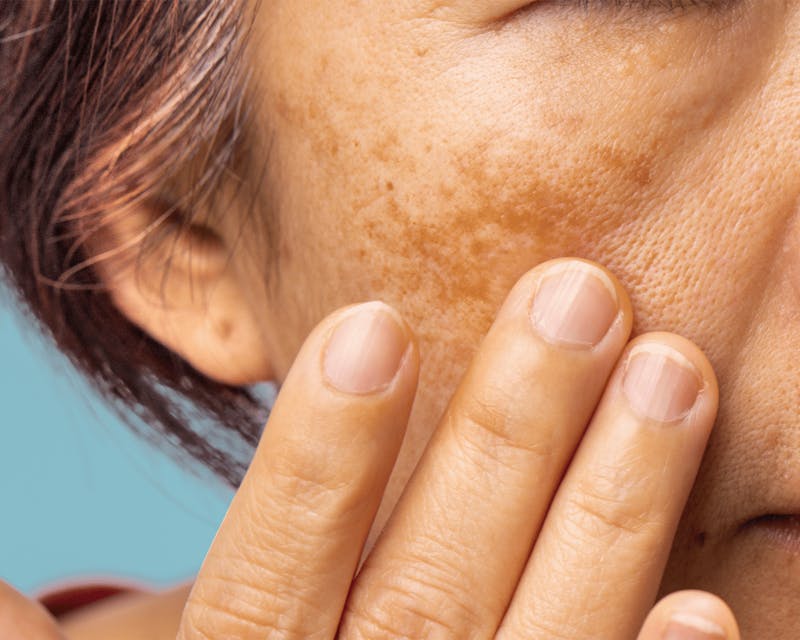
Melasma is a common skin condition that causes dark, discolored patches to appear, most often on the face. This condition primarily affects women, especially during periods of hormonal changes such as pregnancy or while using birth control. While melasma isn’t harmful, it can be frustrating for those who experience it, especially when it affects their confidence and skin’s overall appearance.
In this blog post, we’ll explore the causes of melasma, how it differs from other skin conditions, and the most effective treatments to manage and reduce dark patches. If you're struggling with melasma and want to improve the tone and texture of your skin, keep reading to learn how to manage it effectively.
What Is Melasma?
Melasma is a skin condition that causes brown or grayish-brown patches of pigmentation, typically on the face. These patches most commonly appear on the cheeks, forehead, nose, and upper lip. Melasma is caused by an overproduction of melanin, the pigment responsible for skin color, often triggered by hormonal changes, sun exposure, or genetics.
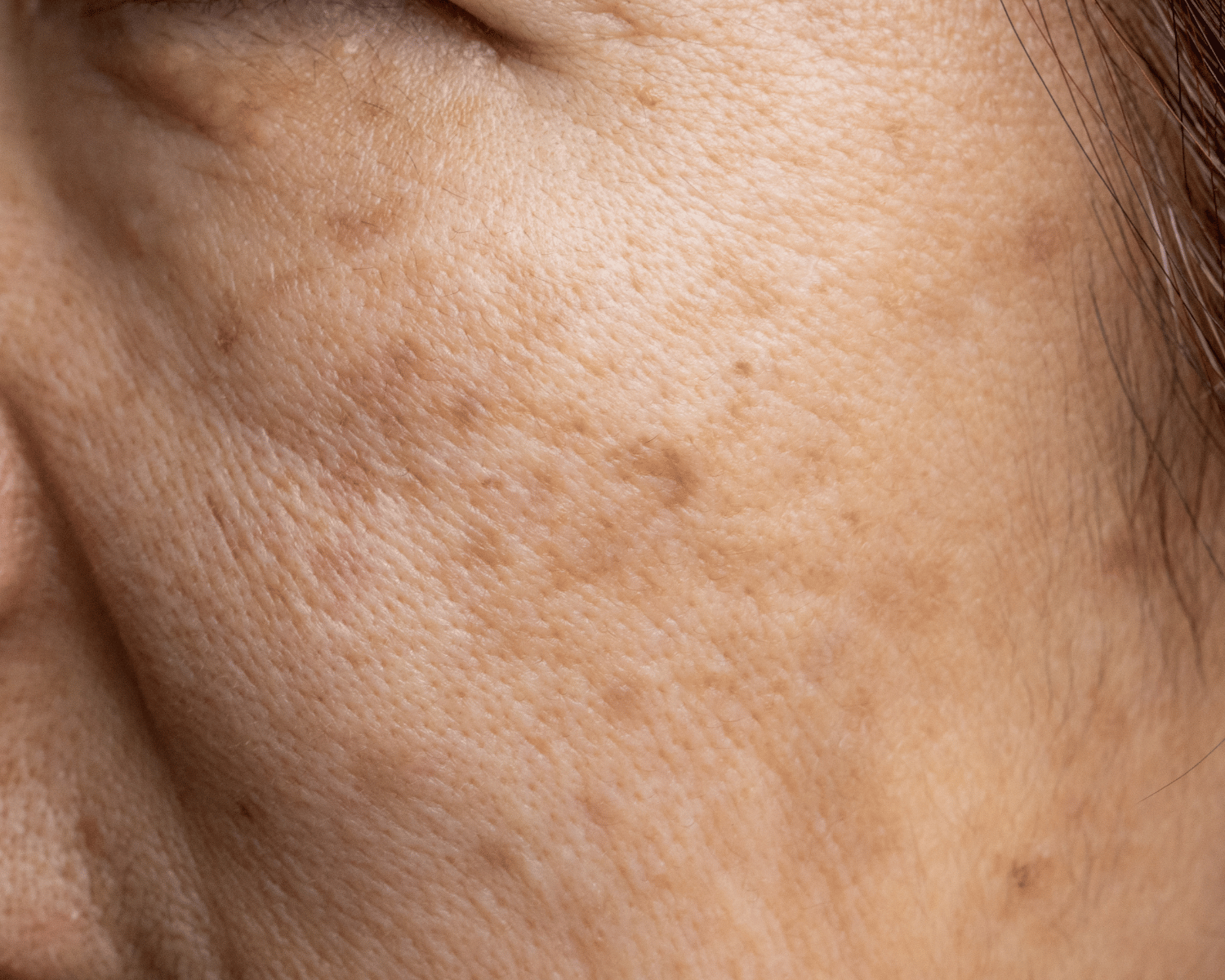
While melasma is not harmful and doesn’t typically cause discomfort, the discoloration can be noticeable and difficult to cover with makeup. The condition is often associated with pregnancy, which is why it’s sometimes called the "mask of pregnancy," but it can also be triggered by birth control, hormone replacement therapy (HRT), or other factors.
Causes of Melasma
Understanding the causes of melasma is essential to effectively managing the condition. Here are some common triggers:
Hormonal Changes
Hormonal fluctuations, especially during pregnancy, menopause, or while taking birth control, are among the most common causes of melasma. The condition is triggered by the overproduction of melanin in response to changes in hormone levels, particularly estrogen and progesterone.
Sun Exposure
Sun exposure is a significant trigger for melasma. UV rays can stimulate melanin production, which exacerbates the dark patches on the skin. For this reason, sun protection is key in managing and preventing melasma flare-ups.
Genetics
People with a family history of melasma are more likely to develop the condition. Genetics can increase the likelihood of developing the pigmentation, especially when exposed to other triggers like sunlight or hormonal changes.
Medications and Topical Products
Certain medications, such as birth control pills or hormone replacement therapy (HRT), can trigger melasma due to the hormonal changes they cause. Additionally, some skincare products or topical treatments that increase skin sensitivity to sunlight can make melasma worse.
How to Treat and Manage Melasma
Sun Protection is Crucial
The first and most important step in managing melasma is sun protection. Since UV exposure is one of the primary triggers for melasma, protecting your skin from the sun is essential to prevent the condition from worsening.
- Broad-Spectrum Sunscreen: Always apply a broad-spectrum sunscreen with at least SPF 30 or higher. Reapply every two hours, and more often if swimming or sweating.
- Physical Barriers: In addition to sunscreen, wear wide-brimmed hats, sunglasses, and protective clothing to minimize sun exposure.
Tip: Look for sunscreens with iron oxide—this ingredient can provide additional protection against visible light, which is also known to exacerbate melasma. We like: Revision Skincare Intellishade® TruPhysical.
Topical Treatments + Skincare for Melasma to Lighten Dark Spots
Several topical treatments can help lighten the dark patches caused by melasma and improve skin tone:
- Hydroquinone: Hydroquinone is a prescription-strength skin-lightening agent that reduces melanin production. It’s often considered the first-line treatment for melasma, but it should be used under the supervision of a dermatologist to avoid side effects like irritation.
- Retinol: AlphaRet by skinbetter science is a powerful retinol-based treatment offered at The Piazza Center, formulated with a unique combination of retinoids and alpha hydroxy acids (AHAs). This treatment gently accelerates cell turnover, helping to fade dark spots while improving the overall texture and tone of the skin. AlphaRet is a great option for those with melasma as it promotes skin regeneration without causing excessive irritation, which is often a concern with traditional retinoids.
- Vitamin C: Vitamin C is an antioxidant that can help brighten dark spots and reduce the appearance of melasma. It works by inhibiting the production of melanin and protecting the skin from UV-induced damage. We recommend:
- Kojic Acid: Kojic acid is another skin-brightening agent that works similarly to hydroquinone by inhibiting melanin production. It’s a gentler option for those with sensitive skin.
Chemical Peels
Chemical peels are an effective treatment for melasma, as they exfoliate the skin and remove the pigmented surface cells. Chemical peels contain active ingredients like glycolic acid, salicylic acid, or lactic acid, which can help lighten dark spots and improve skin texture. When done professionally, chemical peels can significantly reduce melasma’s appearance over time, but it’s essential to follow up with sun protection and avoid sun exposure to prevent new spots from forming.
Moxi Laser for Melasma
For those struggling with melasma, Moxi laser is a great treatment option. Moxi is a fractional laser designed to treat a variety of skin concerns, including pigmentation and uneven skin tone, without causing damage to the skin. Unlike other lasers, Moxi is safe for melasma because it works by gently targeting the deeper layers of the skin, encouraging collagen production and stimulating skin renewal.
View this post on Instagram
Why Moxi is Safe for Melasma
Unlike more aggressive lasers, which can exacerbate melasma by stimulating further melanin production, Moxi uses a controlled, gentle approach. It delivers non-ablative fractional energy to the skin, which means it doesn't cause thermal damage to the top layer of skin, a common cause of melasma flare-ups. Moxi helps to break down pigmentation in the skin gradually while improving overall skin tone and texture, making it a safe and effective treatment for those with melasma.
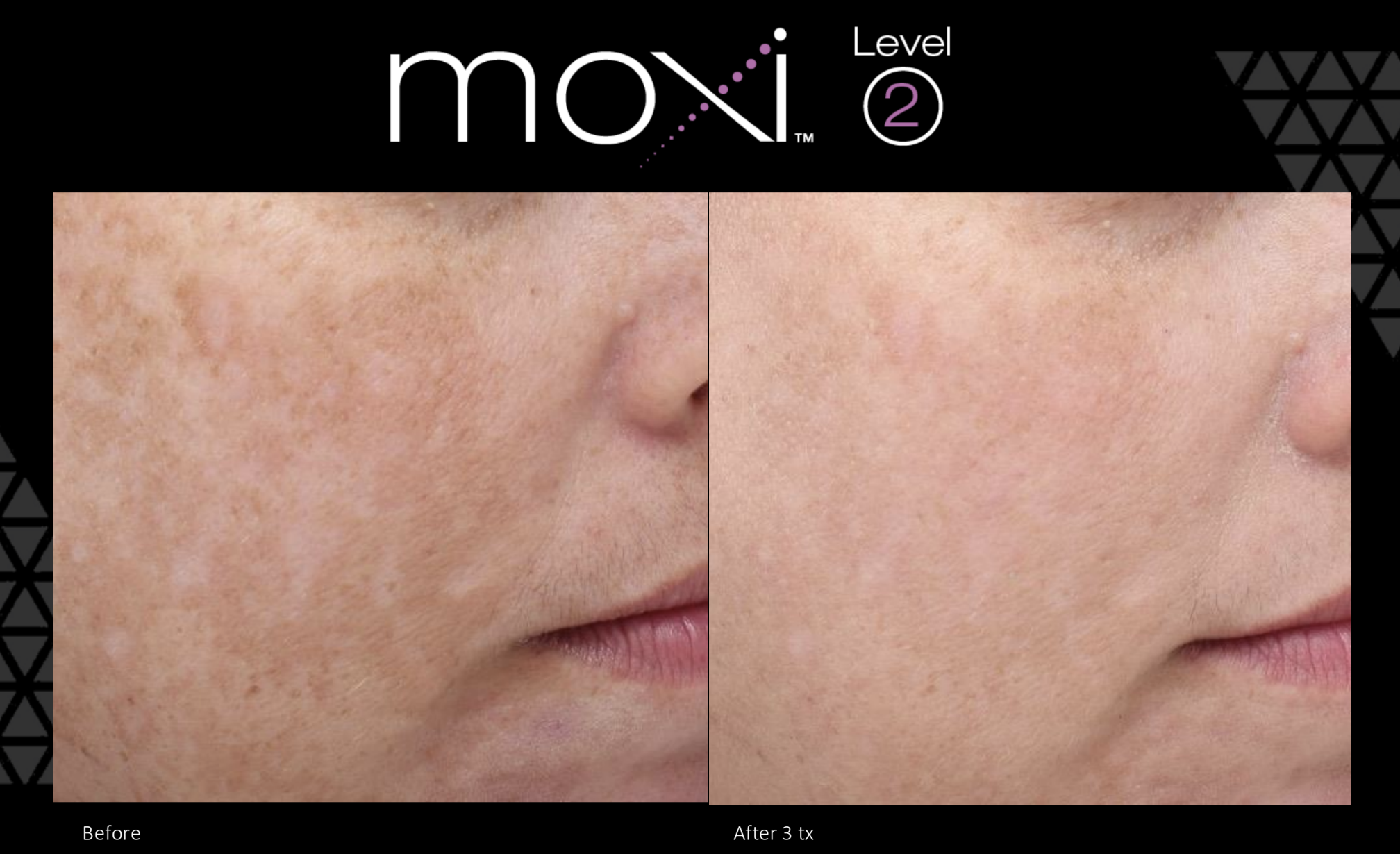
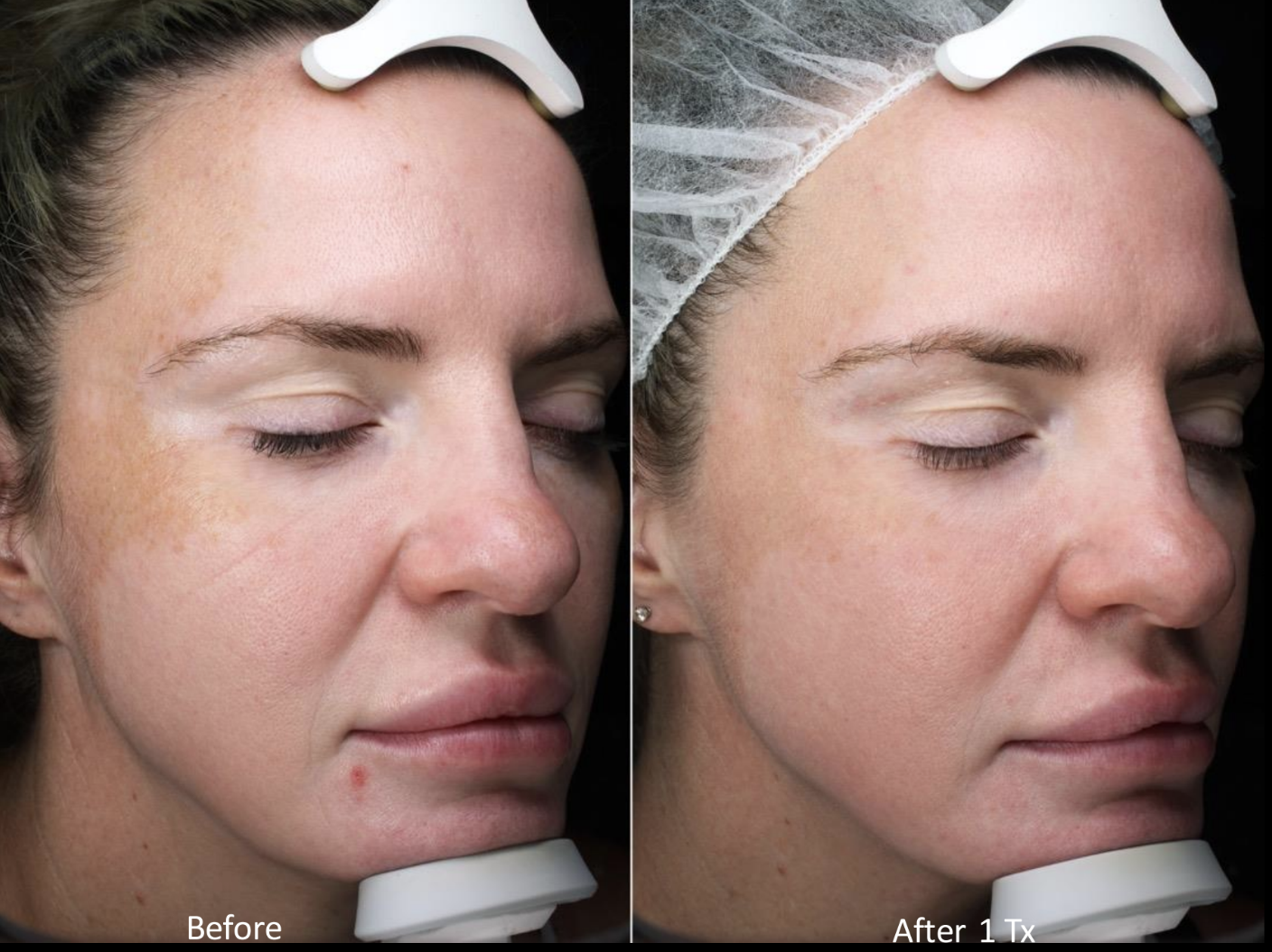
Benefits of Moxi for Melasma:
- Targets deeper layers of skin to improve skin tone and texture
- Safe for sensitive, pigmented skin, such as those with melasma
- Gradual improvement in pigmentation and discoloration
- Minimal downtime and no risk of worsening melasma
We also love pairing it with Carboxy therapy after to help reduce melasma even more.
Microneedling with PRF (Platelet-Rich Fibrin)
Microneedling with PRF is an effective and safe treatment for melasma. Microneedling creates micro-injuries in the skin, stimulating collagen production and helping to break up pigmentation. When combined with PRF (Platelet-Rich Fibrin), a more advanced version of PRP (Platelet-Rich Plasma), the treatment becomes even more powerful. PRF uses the healing growth factors and platelets from your own blood to enhance skin regeneration, promote healing, and reduce pigmentation.
Why Microneedling with PRF is Effective for Melasma
The combination of microneedling and PRF works synergistically to treat melasma. The microneedles create tiny channels in the skin that allow the PRF to penetrate deeper layers, where it can effectively stimulate collagen production and reduce dark spots. PRF also promotes skin regeneration, helping to smooth out texture and tone. Since this treatment uses your body’s own cells, it is safe for all skin types, including those with melasma.
Read: Why we like PRF over PRP
Regular Skincare Routine
A consistent skincare routine tailored to melasma can make a significant difference in managing the condition. Look for products that are designed to lighten pigmentation, protect against UV damage, and keep your skin hydrated. Use a gentle cleanser, a hydrating serum, and a daily sunscreen to keep your skin healthy and balanced.
Products specifically for dark spots/pigment:
- SkinBetter Even Intensive Tone Correcting Serum
- Alastin A-Luminate™ Brightening Serum
- SkinBetter Science PROTECT & CORRECT A-Team Duo Kit
- SkinBetter Science AlphaRet® Overnight Cream
Managing Melasma During Pregnancy
Many women experience melasma during pregnancy, often referred to as the “mask of pregnancy.” While some women may see an improvement in melasma after childbirth, others may find that it persists. During pregnancy, it’s essential to use pregnancy-safe products and avoid treatments like retinoids and chemical peels. Instead, focus on gentle treatments like Vitamin C and sunscreen.
Conclusion
Melasma can be challenging to manage, but with the right combination of treatments and consistent sun protection, it’s possible to reduce the appearance of dark patches and restore an even skin tone. Whether you’re using topical treatments, undergoing Moxi laser therapy, or seeking professional help, there are many ways to address melasma effectively. Always consult with a dermatologist or skincare expert to determine the best treatment plan for your skin’s needs.
Ready to treat your melasma? Schedule a consultation with us at The Piazza Center, and let our skincare experts help you create a personalized plan for managing your melasma and achieving clearer, more radiant skin.

